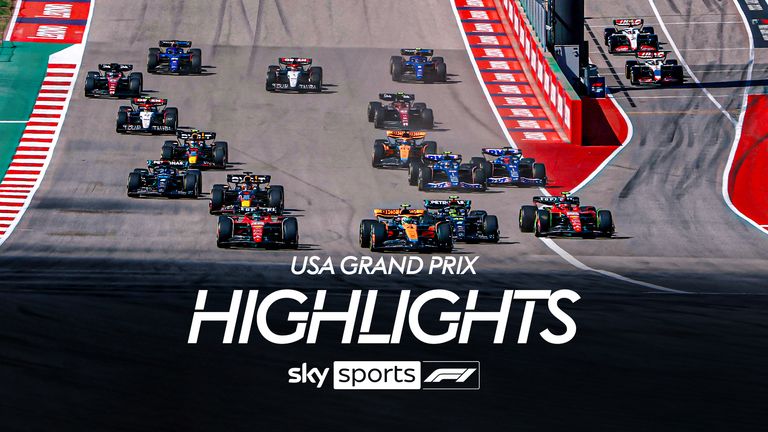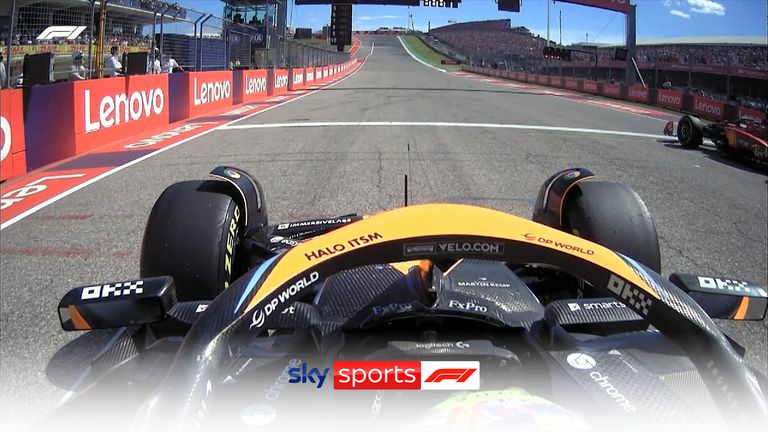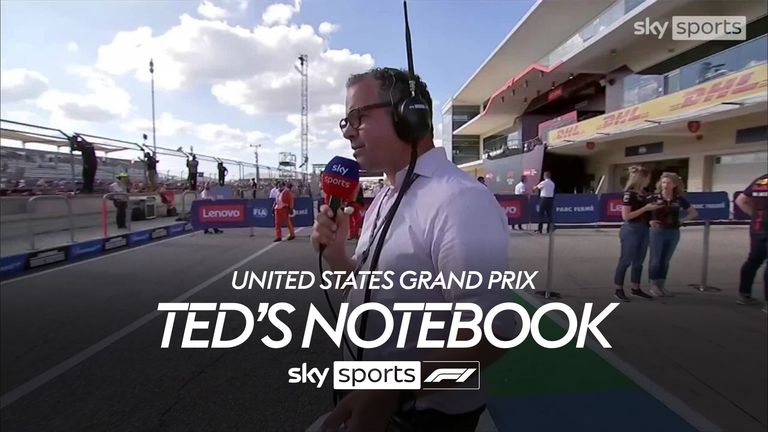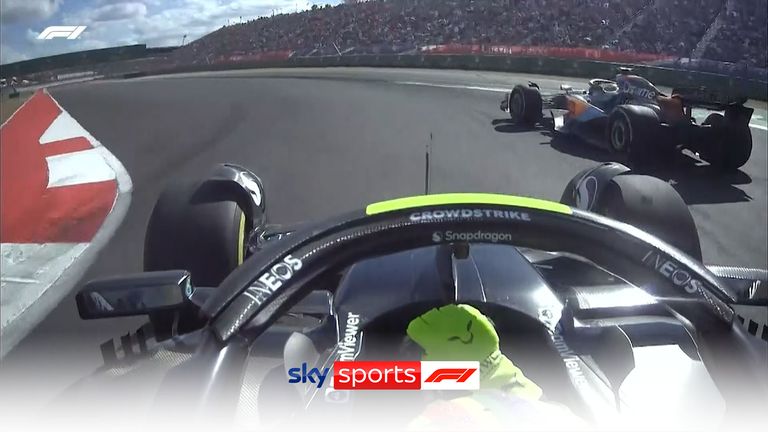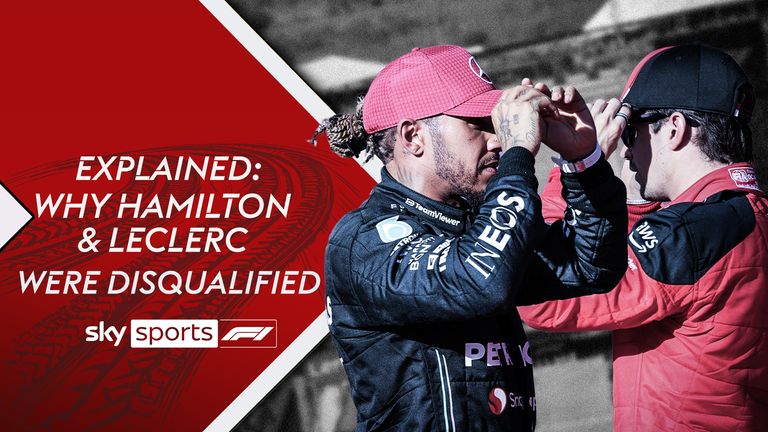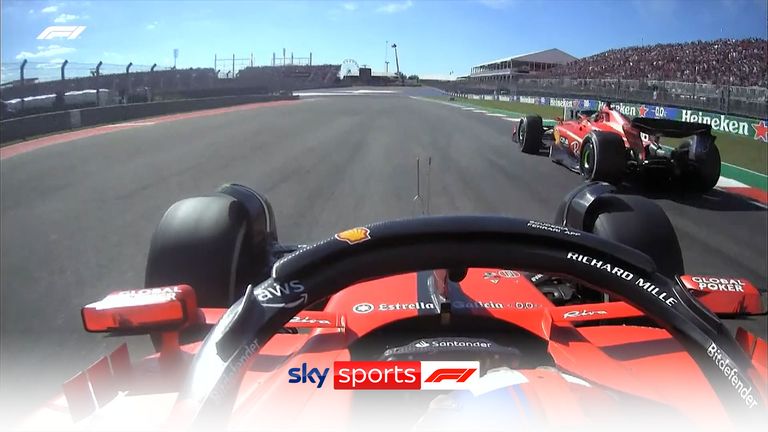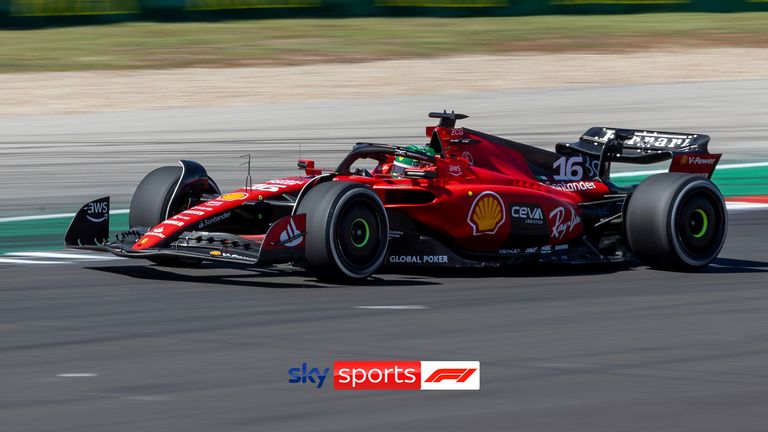Martin Brundle on the United States GP: Lewis Hamilton disqualification shows need to tweak Sprint format
Sky Sports F1's Martin Brundle reviews a United States GP that saw Max Verstappen claim a Sprint and race double, amid plenty of controversy and confusion as Lewis Hamilton and Charles Leclerc were disqualified on Sunday evening
Tuesday 24 October 2023 17:24, UK
Sky Sports F1's Martin Brundle delivers his expert verdict on a United States GP that saw Max Verstappen made to work extremely hard to complete a Sprint and race double.
It was an intriguing and relentless weekend of Formula 1 in Austin, which provided some intense action at times, but created more questions than answers.
On the face of it, the results were simply two more victories for Max Verstappen and Red Bull to add to the many this season, but as we have seen more recently, McLaren, Mercedes and Ferrari are hunting them down. Verstappen's mercurial skills and speed are fully required.
- Lewis Hamilton and Charles Leclerc disqualified: How, why, and what's the wider impact?
- Stream every F1 race and more with NOW
- Get Sky Sports | Listen to the Sky Sports F1 Podcast
There's no doubt that the Sprint format events put the teams under a lot of pressure and overall, we don't get particularly positive feedback from them. With just one practice session before the specification and set-up is locked in by Parc Fermé rules, especially at a relatively unknown circuit like Losail in Qatar, or a bumpy circuit such as COTA in Austin, this leaves them underprepared, which is far from ideal with such complex cars.
And that's assuming the first practice session has representative weather and they don't have any reliability issues or accidents.
And there's the first question: do we want the jeopardy and variability of some teams missing their ultimate pace, or is this wasting the resource and skills of teams and drivers in a 'not very F1' manner?
We had 20 per cent of the field starting the main Sunday race from the pit lane, in the form of both Aston Martins and both Haas cars, because they were better breaking out of Parc Fermė and trying for a more competitive race set up. And from Friday afternoon onwards, with two qualifying sessions and two races to come, some drivers were consigned to a difficult car for the rest of the weekend.
This is not ideal or necessary, and while I don't like us to keep messing with the format, we must make some changes for next season and beyond. It's too much of a lottery which has far reaching consequences, as we would find out several hours after the Sunday GP.
Max has a fair point that the Sprint gives you half the story for race day and takes away some anticipation. I'd still much rather watch a Sprint than a free practice session personally.
Another issue is that we currently have three different event tyre allocation scenarios, two different qualifying formats, and two different race formats. Teams and media alike have to keep refreshing their memories on the ramifications each weekend - and so what chance do the fans have of remembering it all?
Should more cars have been disqualified?
Mercedes brought a final upgrade for the season, which was as much about direction for next year's car as this year's performance. Lewis Hamilton, however, grasped the positivity and, on a circuit he relishes, drove the wheels off his steed and could even have won the race, before being disqualified, that is.
Post race, his car, along with the Ferrari of Charles Leclerc, was found to have too much wear on the 'plank' underneath it. We've had this system for nearly three decades in a successful attempt to control performance and avoiding the need to replace expensive new carbon fibre floors every day.
The plank is made out of reinforced resin and not wood, and can often leave yellow stains on the track at corners like Eau Rouge in Spa. When going onboard with drivers, at higher speeds you can hear the cars scuffing along the ground, and of course the skid blocks permitted to protect and control the wear of the plank often give off sparks.
With higher rake cars, meaning a low front but higher rear ride heights, other than the area under the front of the chassis nicknamed the 'tea tray', it's not been much of an issue for a good few years as the teams have had wear under control.
However, the latest 'ground effect' era cars, following the 2022 regulations change, perform much better when running very close to the ground, as teams attempt to help seal the low drag but very potent under-floors for more downforce, and hence grip and speed.
At a bumpy track like Austin, and with only one practice session, setting a ride height for the duration of the event is quite a challenge with regard to performance, and driver and car tolerance, and of course plank-wear legality, especially with a full fuel tank.
If they simply raised the car to be cautious, they'd lose so much performance they may as well pack up and go home.
After the race four cars were checked, including Verstappen's Red Bull and Norris' McLaren, and both Hamilton's Mercedes and Leclerc's Ferrari were found to have too much wear, for which the only remedy is disqualification, however minimal the indiscretion. There can be no grey area on this.
The next big question however is that if 50 per cent of the tested cars failed, then shouldn't all the finishers have been checked? The answer must surely be yes.
It must be said that the FIA checks pre and post race are beyond comprehensive. The published list includes over 50 separate and detailed checks mostly on all classified finishers, and a few on randomly selected cars.
Strategy indecision costs Mercedes and Ferrari
With high ambient and track temperatures, and along with the fast and bumpy nature of the track, it was quite the challenge for the cars and drivers. Tyre degradation in the main race was clearly higher than expected and a possible one-stop race became a clear two-stop strategy.
However, Mercedes seemed reluctant to accept that and tried to eke out a longer first stint. They had to concede a few laps later which left them to an extent between strategies but nonetheless Hamilton and Russell had great speed in the last few laps, albeit with at least one of them running too low for the rules.
Ferrari didn't change their minds for Charles Leclerc, and he went from pole position to sixth and that eventual disqualification. It was a dismal race day for him.
Daniel Ricciardo in the AlphaTauri also effectively had a one-stop race and it consigned him to last classified finisher. The predictions on the day were wrong, which once again asks the question if this is good for the show, with regard to so little preparation.
Search for track limits solution continues
Track limits reared its ugly head again, as they always do at COTA, and pretty much everywhere these days. The white lines defining the edge of the racetrack in the three most critical corners were cheekily widened overnight on Friday, and this meant that in the race there were 35 recorded track limit infringements in the eight corners monitored. Given 17 cars finished the 56-lap race, those corners were navigated successfully over 7600 times, to put it in perspective.
The conundrum remains the same, drivers will always push the outer limits because it's faster. High kerbs can damage cars and tyres, and launch them dangerously into the air. Big tarmac run off areas give options to avoid incidents and keep cars in the race, and avoid safety cars and red flags. There wasn't even a yellow flag let alone a safety car in the race.
Gravel, grass, or artificial turf just the other side of the kerb can be effective but often comes up and gets spread all over the race track. What's good for car racing with regard to run-off areas is often bad for bike racers, or may well restrain an F1 car but is laughed at and ignored by other categories.
All the support race categories in Austin had more lenient interpretations of track limits and it didn't look especially professional, and certainly not acceptable in F1. It's a problem that's easily fixed with the unyielding walls and barriers of a street circuit, but much more difficult for the many different circuits of the world. Specific and more colourfully painted zones which must be driven over and have sensors or a permanent camera observing for instant feedback may be one solution.
The drivers are clearly struggling to see the painted white lines at high speed while peering out of a cluttered cockpit, so bright zones and a touch more leeway would help reduce the issue. Something slippery and uninviting just the other side of the kerb may have to be a solution.
Turn one in Abu Dhabi interests me because there's a slight drop down onto the run-off area which compromises the drivers into the high speed turns two and three, and so they tend to be more accurate there. Whatever the fix, letting drivers make up their own racetrack is not one of them.
It was a great weekend for Lando Norris, with fourth in the Sprint and leading the GP before eventually finishing a net second helping McLaren overhaul Aston Martin in the Constructors' Championship.
There's still plenty to play for between Alonso, Sainz, Norris, Leclerc and Russell in the drivers' championship. Hamilton's disqualification was a big blow in his pursuit of Perez for second. Onto Mexico we go.
F1 heads straight to Mexico for the middle leg of the Americas triple header. Watch the whole Mexico City Grand Prix weekend live on Sky Sports F1 from Friday, with Sunday's race at 8pm. Stream F1 on Sky Sports with NOW

